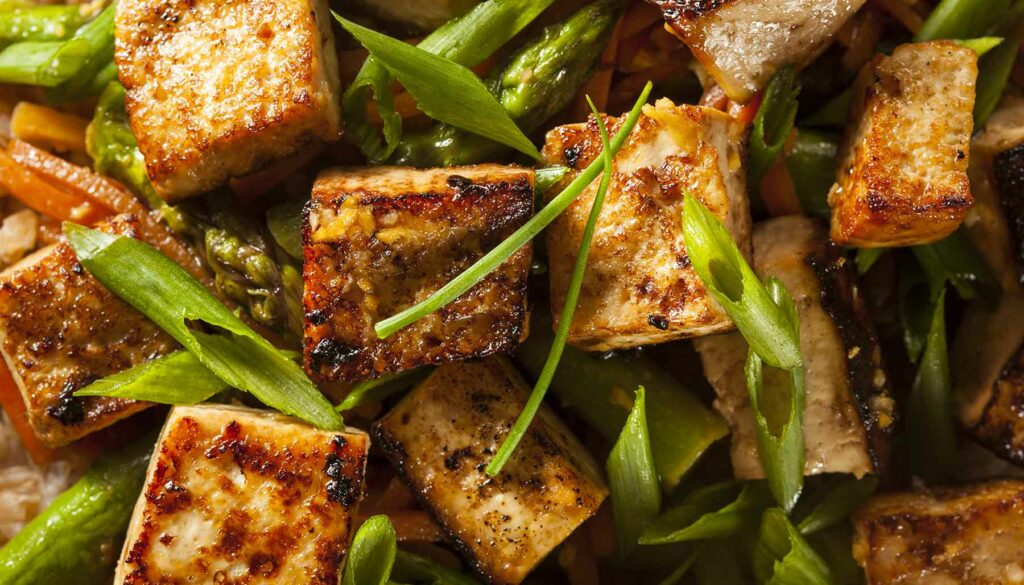Recently, I’ve been looking at a lot of nutrition labels.

No, it’s not because I just really like to read. I mean, I do like to read, but I definitely prefer actual books over labels.
I am reading all those labels because I recently did a deep dive into all the places where sugar is lurking. In case you were wondering, the sweet stuff is seemingly everywhere. If it is frozen, canned, or boxed – in other words, not a whole food – it is likely to contain a lot more sugar than you think.
Psst – If you want to read more about all that sneaky sugar, check out these surprising sources of hidden sugar that are lurking in your diet.
Anyway, while finding out that my diet was overloaded with sugar, I have also started looking at everything else in my food, too. And honestly, this is something I should have already been doing. I don’t even want to talk about the sodium in my diet.
There’s been one thing that had me asking questions, though. When I look up some foods, it talks about folate. A quick google will tell you that folate is vitamin B9. Okay, but some foods contain folic acid, which also comes up as vitamin B9.
Why do some of my foods say “folate,” while others say “folic acid,” and is that not the same thing? Is there a difference between these two vitamins?
The short answer is that they are both forms of B9, but they are pretty different from each other. Both can be beneficial to your health, but the sources they come from and the way our bodies metabolize them are different. And I’m here to shed some light on it!
Why Do We Need Vitamin B9?

First, let’s talk about why vitamin B9 is so important.
It is an essential nutrient that we need and is one of 8 different B vitamins: B1 (thiamin), B2 (riboflavin), B3 (niacin), B5, B6, B7 (biotin), B9 (folate/folic acid!), and B12. Most of these are water-soluble vitamins, which means they aren’t stored by our bodies. That means we have to keep consuming them regularly. And while B9 can be an exception – folic acid is stored in the liver – this does not apply to folate. We will talk about this in a second.
Vitamin B9 is vital for creating red blood cells, which carry oxygen around the body. This vitamin aids in the repair of DNA and RNA, cell division and growth, brain function, and preventing age-related hearing loss. It is also really important for pregnant women to consume enough B9 because it’s pretty important for fetal development. Getting the right amount of B9 helps prevent the fetus from developing neural tube defects, or major congenital deformities of the brain or spine.
Additionally, all eight of the B vitamins, also referred to as B-complex vitamins, help the body use fats and protein, and convert food into fuel.
Okay, So Back to the Topic At Hand: Folate vs. Folic Acid
Clearly, we need B9. But how do we know if we’re getting the right kind when there’s both folate and folic acid? Both of them are forms of B9, but they do differ. They come from different places, and they are even metabolized differently. To be clear, though, they can both be beneficial to our health. It’s just important to know the differences, and how you are getting your intake.
What is Folate?
Folate is the naturally occurring form of vitamin B9. It is found in many foods, such as leafy green vegetables, asparagus, brussels sprouts, avocados, oranges, beef liver, peanuts, black-eyed peas, and kidney beans.

Folate is actually a general term that refers to a group of related compounds, and the active form is a folate known as 5-methyltetrahydrofolate (5-MTHF). This is metabolized in the digestive system.
It is pretty hard to overdo it with folate. This naturally occurring vitamin is water-soluble. That means that your body can get rid of excessive amounts easily. If you do happen to get too much folate from eating a bunch of veggies, any excess will just leave through the urine.
It is worth noting that overcooking your foods can diminish the amount of folate in them. Folate is not heat-stable, so all that naturally occurring folate will start breaking down with heat and light.
What is Folic Acid?
Folic acid, also known as pteroylmonoglutamic acid, is the synthetic form of vitamin B9. It is not naturally found in nature or in our bodies. It was created in 1943 and introduced as a mandatory food fortification in 1998. It is added to processed food products, like flour and cereals, and is also used in supplements.

There is a reason why folic acid is used for supplements and food fortification over folate. That is because natural folate can break down with heat and light. As many fortified products are baked or cooked, the more heat-stable folic acid is a better choice.
While the naturally occurring folate is converted in the digestive system, folic acid is processed in the liver and requires the enzyme dihydrofolate reductase. The process is slower and less efficient, so after taking a folic acid supplement, it can take some time for the body to convert it. Even small doses may not be completely metabolized until the next day.
Related: Realistic Ways To Cut Back on Processed Food
The slower, less efficient process, combined with a high intake of folic acid, may result in a lot of unmetabolized folic acid in the blood system. While unmetabolized folic acid is commonly detected in people’s bloodstreams, high levels of it could have adverse health effects. Although there is no conclusive evidence, some studies point to increased cancer risk. While this is a concern, further studies are needed.
What Causes Vitamin B9 Deficiency?
It can be pretty common for people to have low levels of B9. Certain medications can interact with and cause lower levels of B9 in the body. Issues such as celiac disease, inflammatory bowel disease (IBD), and alcoholism can also cause a deficiency.

Low levels of B9 can cause quite a few symptoms:
- Forgetfulness or mental sluggishness
- Fatigue or lethargy
- Weakness
- Anemia
- Irritability
- Loss of appetite
- Shortness of breath
- Diarrhea
- Gingivitis
- Tongue inflammation
- Growth problems
(If you have concerns that you have a B9 deficiency, it’s important to chat with your doctor before taking supplements.)
Clearly, it’s important to make sure you’re getting enough B9 in your diet. But should it come from folate or folic acid?
Which Is Better?
Okay, so how do you choose? When it comes down to it, both folate and folic acid are adequate. They both have very similar effects. However, it’s worth noting that it is always better to get your vitamin B9 from whole foods. I mean, that’s the case for just about any vitamins and nutrients our bodies need, right?
On the flip side of that, though, a manmade B9 from fortified foods is better than no B9! If you are having trouble getting enough of the vitamin, adding fortified foods or a supplement will help you get back on track.
Dietary Sources of Folate
Folate is naturally occurring and can be found in plenty of foods. Vegetables are great sources of folate, but there are a few unexpected sources, like beef liver.

- Dark green and leafy vegetables such as spinach, kale, arugula, romaine lettuce, turnip greens, asparagus, Brussels sprouts, broccoli, endive, garden cress, butterhead lettuce, collard greens, cabbage, and others
- Yellow sweet corn
- Bananas
- Avocado
- Artichokes
- Beans and legumes such as garbanzo beans, navy beans, black-eyed peas, lentils, kidney beans, pinto beans, peas, and others
- Soybeans and products made with them, like tofu and soy milk
- Eggs
- Beef liver
- Parsnips
- Okra
- Parsley
- Citrus fruits such as oranges, mango, grapefruit, kiwi, papaya, lemons, limes, and more
- Beets
- Nuts and seeds such as walnuts, flax seeds, sunflower seeds, peanuts, almonds, chestnuts, hazelnuts, hemp seeds, and more
- Wheat germ, which can be found in unrefined whole grain wheat, as a component of some granolas, and even packaged alone
Dietary Sources of Folic Acid

Did you know that folic acid fortification of grain and cereal products is mandatory in many countries? This includes the United States and Canada. It’s because of the abundant evidence that folic acid supplements during early pregnancy can prevent birth defects. That means that it is pretty easy to find fortified foods that will provide folic acid. These products have folic acid added in during the manufacturing process.
- Enriched bread
- Enriched flour
- Enriched pasta
- Enriched rice
- Enriched cornmeal
- Enriched grits
- Fortified corn masa flour
- Fortified breakfast cereal
- Dietary supplements
If you choose to take dietary supplements, it is a good idea to take folic acid as part of a multivitamin, or along with other vitamin supplements. B9 works in conjunction with other B vitamins and other nutrients. Taking it alone just won’t do much of anything.













